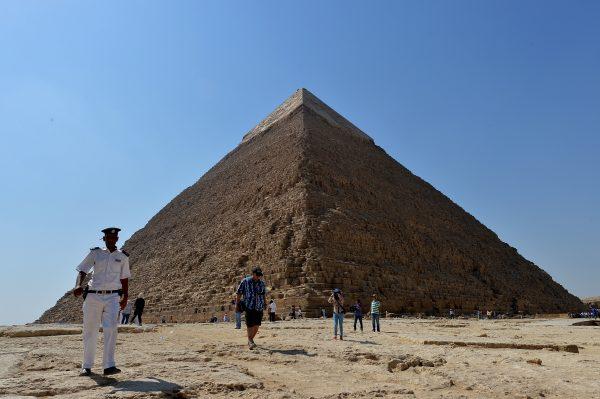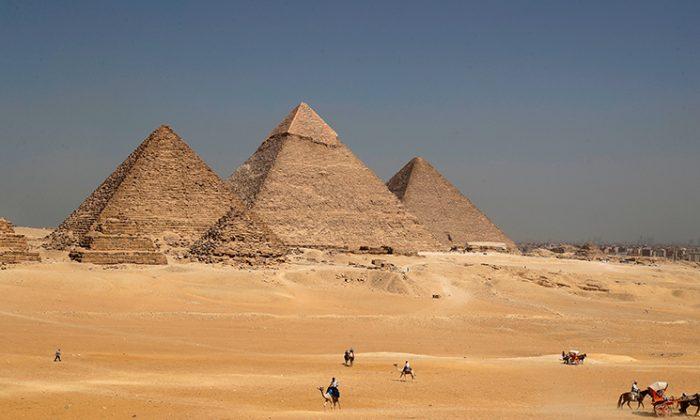An Egyptian man who climbed the Great Pyramid of Giza Wednesday, allegedly throwing small stones at security who attempted to stop him, was arrested, Egyptian officials say.
The news release explained that the man went to the entrance of the pyramid, like any other visitor, but then tried to climb to the top of the pyramid, which is when security tried to stop him.
Archaeologists and security with the tourism and antiquities police tried to prevent him from climbing, but the man “resisted them and threw stones.”
The man then climbed to the top of the pyramid, where he grabbed the wooden mast that ha been placed there in modern times to show the original height of the ancient structure, the news release said. The pyramid originally stood at 146 meters (479 feet) but, due to erosion and missing its capstone, it now stands at just 139 meters (456 feet) high.
Police with the Ministry of Antiquities arrested the man and forwarded the case to the Public Prosecution office for further investigation. It is unclear whether the man will be charged with anything.
The Great Pyramid of Giza, also known as the Pyramid of Khufu or the Pyramid of Cheops, is the oldest and largest of the three Great pyramids at Giza, and the only remaining wonder of the seven wonders of the ancient world. Climbing of the pyramids is prohibited by the Ministry of Antiquities, and climbers may break a number of antiquity laws by doing so.
“Spoiling it is not considered a crime according to the law of antiquities or the law protecting the antiquities,” Waziri stated, according to Egypt Today.
Related Incidents

It is not the first time that someone has attempted, or succeeded, in climbing the Great Pyramid.
He told Ekstra Bladet that the two of them had not had sex at the top of the pyramids, and that it was all just for the picture.
In a separate case from 2016, an 18-year old illegally climbed the Great Pyramid in broad daylight, documenting the experience in a video.
Andrej Ciesielski, from Germany, was given a lifetime ban from Egypt after he climbed the pyramid to take photos from the top. According to a Huffington Post blog article that he wrote, the climb took him about eight minutes while the descent took him about 20.
“At the halfway point, some people saw me and looked up. That’s how the police spotted me. They shouted something in Arabic, I think, but I didn’t care and kept going while listening to music,” he said in the post.
After his climb, Ciesielski posted his two minute video on YouTube, where it was received nearly 3.5 million views. It shows him arriving at the base of the pyramid and then cuts to him climbing up the side, and finishes with a view from the top.
He was arrested after he climbed down.





